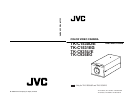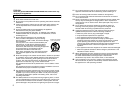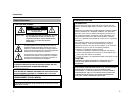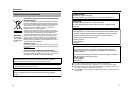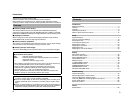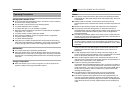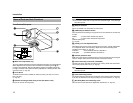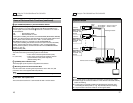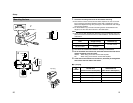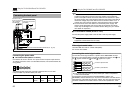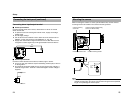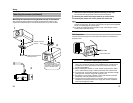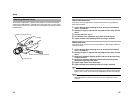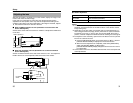
10
Introduction
Storage and Location of Use
ⅷ This camera has been designed for indoor use. When you use it outdoors,
be sure to use a housing or the like.
ⅷ Do not install or use the camera in the following places.
● In a place exposed to rain or moisture.
● In a place with vapor or oil, for example in a kitchen.
● When the ambient temperature rises above or falls below the acceptable
range (from -10 I to 50 I)
● In a place at which corrosive gases are emitted.
● Near a source of radiation, X-rays, strong radio waves or magnetism.
● In a place subject to vibration.
● In a place with excessive dirt.
ⅷ Using this unit or cables connected to this unit at places at which strong
radio waves and magnetism are emitted (e.g. near a radio, TV, transformer
or motor) may give rise to noises in the image and changes in its color.
Maintenance
ⅷ Turn off the power before performing maintenance.
ⅷ Clean the camera with a soft cloth. Wiping it with thinner or benzene may
melt the surface or cause it to fog. For tough stains, wipe using a cloth that
is dipped into a neutral detergent diluted with water, followed by wiping with
a dry cloth.
Energy Conservation
ⅷ When the camera is not in use for a long time, turn off the power of the
system for safety and energy conservation reasons.
Operating Precautions
11
Others
ⅷ This camera comes with a built-in AGC circuit. The sensitivity increases
automatically at a dark place and the screen may appear grainy. This is not
a malfunction.
ⅷ While the AGC is activated, if a transceiver which causes strong
electromagnetic wave is used near the camera, the picture may suffer from
beat.
ⅷ Please use the camera more than five meters from such transceivers.
ⅷ You may hear some noise during power on and when the screen is
switched between the color and the black and white mode, because of the
movement of the optical filter switching motor. Also, the image will be
somewhat distorted.
ⅷ The beat may sometimes appear on the screen if gain is raised when the
line lock is in use, but the phenomenon takes place due to the fluctuation of
power frequency and is not a malfunction.
ⅷ When the COLOR OVERLAY is turned AONB, there may be an increase in
the color noises or changes in the colors. When such symptoms occur or
when infrared illumination is used, set COLOR OVERLAY to AOFFB (black
and white).
ⅷ When this camera is used in the White Balance ATW (automatic tracking)
mode, the color tone may differ slightly from the actual color due to the
principle of the automatic tracking white balance circuit. This is not a
malfunction.
ⅷ If a high brightness object (such as a lamp) is shot, the image on the
screen may have white vertical tailings. This is a characteristic of the CCD
known as the smear phenomenon and is not a malfunction.
ⅷ When a high brightness object is shot, sometimes undulations can be
observed on the vertical lines of the object. However, this phenomenon is
peculiar to the camera and is not a malfunction.
ⅷ Caution for operating the VIDEO IRIS lens
If the LEVEL dial of the VIDEO IRIS lens is set to a low level (L position), a
malfunction - such as the hunting phenomenon where the iris opens and
closes involuntarily - can occur. In such a case, first set the LEVEL dial on
the lens to the H position, and then adjust it to an optimum level while
checking the video signal.
ⅷ The cable stopper on the terminal block can come off sometimes.
Therefore, be sure to take enough time and fix the cable securely.
ⅷ This camera achieves optical performance by using specified lens (1/3
inch size) conformed to CCD size. However, some general lens may not
meet this specification (effective image circle is small or optic displacement
is big). When such lens are used, negative effects such as shading may
occur.
: Only for TK-C1530U/E and TK-C1531EG



